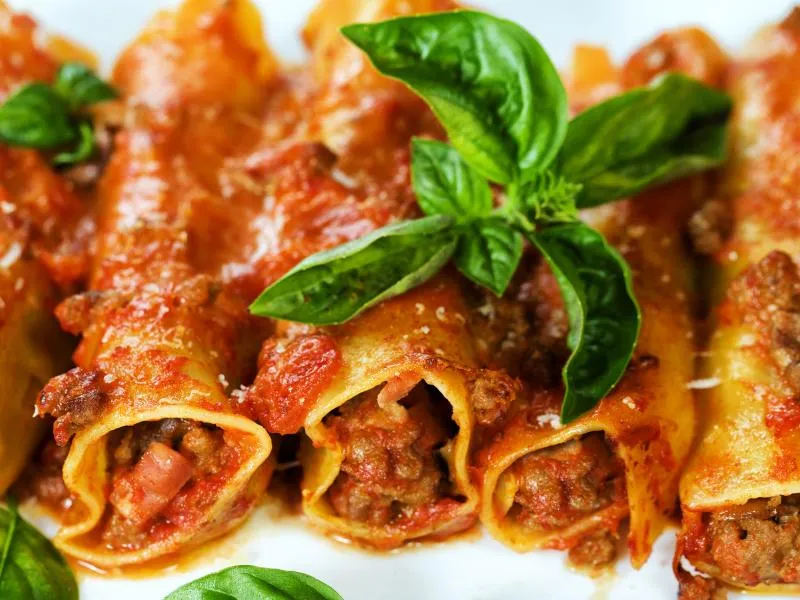Cannelloni di Carne
Pasta tubes filled with savory meat ragù, topped with béchamel and tomato sauce.
👉 View Authentic Recipe 👈
About This Dish
Cannelloni di Carne originated in Emilia-Romagna, where it emerged as a celebration dish in the late 19th century. The dish features large pasta tubes traditionally filled with a mixture of ground beef, pork, and sometimes veal, combined with soffritto (finely diced carrot, celery, and onion), and enriched with Parmigiano-Reggiano cheese.
Unlike other stuffed pasta varieties, authentic Cannelloni di Carne involves two distinct sauces: a rich béchamel and a light tomato sauce, creating a perfect balance of creaminess and acidity. The pasta itself was historically made fresh and rolled into cylinders, though modern preparations often use dried pasta tubes.
This hearty dish holds an important place at Sunday family gatherings and holiday feasts throughout northern Italy. Regional variations exist, with some areas incorporating spinach into the filling or adding different herbs, but the combination of meat filling, béchamel, and tomato sauce remains the defining characteristic of proper Cannelloni di Carne.
🧑🍳 Analyzed by CucinaBot
Why This Dish Works
Cannelloni di Carne achieves culinary excellence through its contrasting textures and complementary flavors. The meat filling provides savory depth through slow cooking and caramelization of proteins, while the dual-sauce approach creates a perfect balance—the béchamel adds velvety richness that coats the palate, and the tomato sauce provides acidity that cuts through the richness, preventing heaviness. The pasta layer acts as a neutral medium that absorbs surrounding flavors while maintaining structural integrity during baking.
Key Success Factors
- Moisture Balance: The meat filling must be moist enough to remain tender but dry enough not to make the dish watery
- Sauce Ratio: Equal parts béchamel and tomato sauce creates the ideal flavor balance
- Proper Filling: Cannelloni should be filled completely but not overstuffed, allowing room for expansion during baking
- Pasta Texture: The pasta must maintain al dente texture despite being twice-cooked (boiled then baked)
Common Pitfalls
Many non-authentic recipes rely on ricotta cheese as a primary filling component, which produces a significantly different texture from the traditional meat-based version. Another common mistake is submerging the cannelloni in excessive sauce, which prevents the pasta from maintaining its structural integrity and creates a dish more reminiscent of a casserole than proper cannelloni.
How to Judge Authenticity
When reviewing recipes, look for these markers of authenticity:
- Uses a proper soffritto base (carrot, celery, onion) for the meat filling
- Includes both béchamel and tomato sauce, not just one or the other
- Contains minimal added herbs (primarily nutmeg and perhaps a bay leaf)
- Specifies pre-cooking the pasta to al dente, not using it raw
- Includes Parmigiano-Reggiano in both the filling and as a final topping